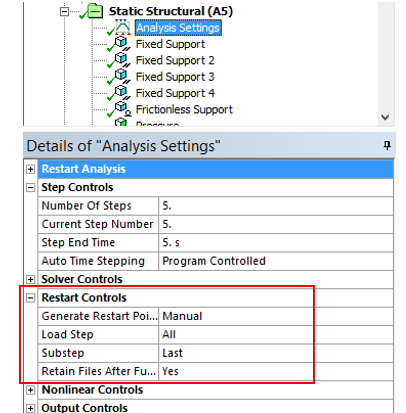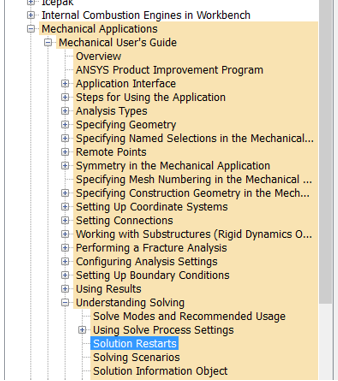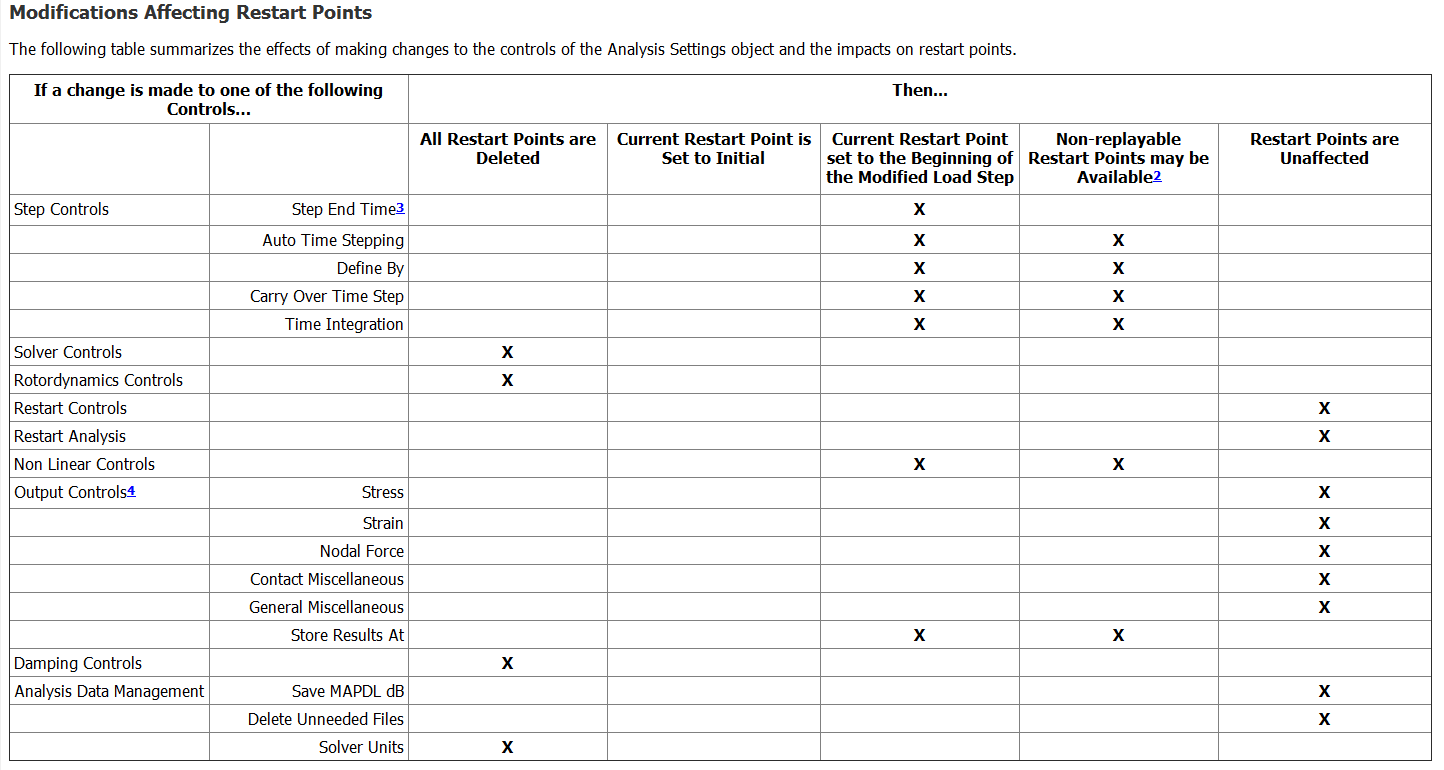‘Restarting’ the process in ANSYS Mechanical Products by which a model is solved starting from a previously solved point. The previously solved point contains data for all nodes/elements in the model; there is no results mapping and interpolation when a restart is performed. This is the most accurate method for starting an analysis from a previously solved point.
By default, restarts are not kept when a simulation finishes. The user must modify the Analysis Settings in ANSYS Mechanical to keep the restarts points that will be needed. Those options are shown below:

Restarts do have limitations. For instance, modification of loads in a step before a restart point is to be used invalidates that restart point. Several tables in the ANSYS Help documentation characterize what happens to restart points if objects in the model tree are changed. This section can be found in Mechanical Applications > Understanding Solving > Solution Restarts, as shown.

Here’s one of the tables showing where restarts can be used followed by common questions we related to restarts.

What can solution restarts be used for?
For cases where some subset of the loads does not change and only a few loads change/vary. This is commonly referred to as load case modeling. ANSYS Mechanical FEA can do load case modeling.
Can you give an example of load case modeling?
A model that solves bolt pretension in the first several steps and then locks them in place. Commonly, service loads are applied after the bolt tightening is simulated. The service loads can represent multiple load cases, say one load case is a pressure load, another is a force load.
Another example is a ROPS (Roll Over Protection System) analysis, where loads are sequentially applied on a structure until some criteria is met (usually energy dissipated by the structure). Once the criteria are met for one load case, the load is removed and another load is applied. This process can also be done via restarts.
Why would we do this?
This saves time on solving models. Using the example above, without restarts, the bolt pretension steps would need to be solved every time a load case is added/modified. With restarts, loads can just be activated/deactivated in a step following the bolt pretension and the bolt pretension final step used as the restart point.
Things to know before attempting this method:
All of the load cases that will be solved should be known beforehand. The restart analyses require that ALL loads are defined in the initial model. In ANSYS Mechanical, loads cannot be added to the model tree without invalidating the previous results (ignoring the ability to use restarts).
Newly added loads also will not be applied in a restart analysis as the restart method does not create new elements for these new loads.
If bolt pretension is to be used, any loads defined for a load case should be applied in a step after the final bolt pretension, as usual.
Also, if bolt pretension is used, a step after the final pretension occurs IS REQUIRED. If this is not included, ANSYS assumes the last bolt pretension will be Loaded and not Locked. This means that ANSYS would modify the pretension to maintain whatever preload you have assigned, rather than applying the service loads as a working load on the bolt. Physically, it would be like tightening/loosening the bolt as the service loads are applied.
Method:
The general steps to this method are as follows:
- Set up a model with all of the loads applied to the structure. This includes bolt pretensions and any loads that need to be simulated for the load cases. Set up the Analysis Settings as required for the analysis (multiple load steps, Large Deflections, etc.).
- Modify the Restart Controls to keep all restart points once the model is solved.
- Modify the loads for the load case studies to be inactive.
- Solve the model.
- Duplicate the analysis, sharing the Engineering Data, Geometry and Model cells. This guarantees the model setup remains the same for all models.
- In the new system, activate the load for the first load case study.
- Use the Tools > Read Results File… and locate the file.rst from the previously run analysis. This imports the results data into the model.
- Modify the Restart Analysis options in Analysis Settings to restart from the end of the first simulation (the final bolt pretension loading, for example).
- Solve the model.
Example:
The example shown here uses an oil field fluid end model with bolt pretensions applied. There are two load cases: 1) a pressure load on the cylinder bore, 2) a force load applied on one side of the fluid end body.

